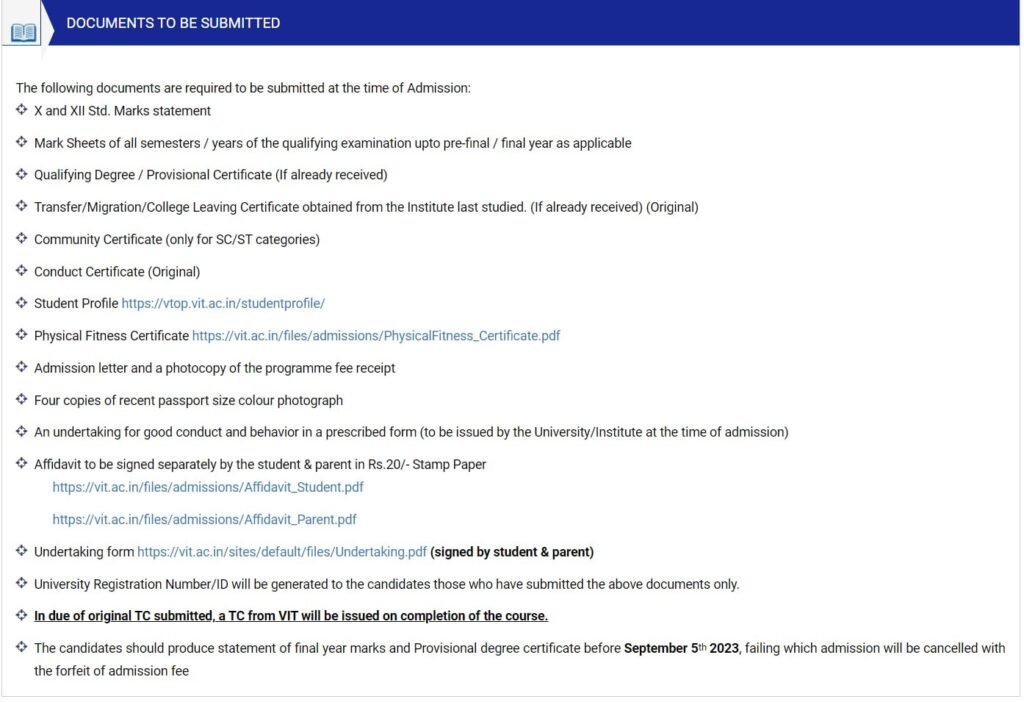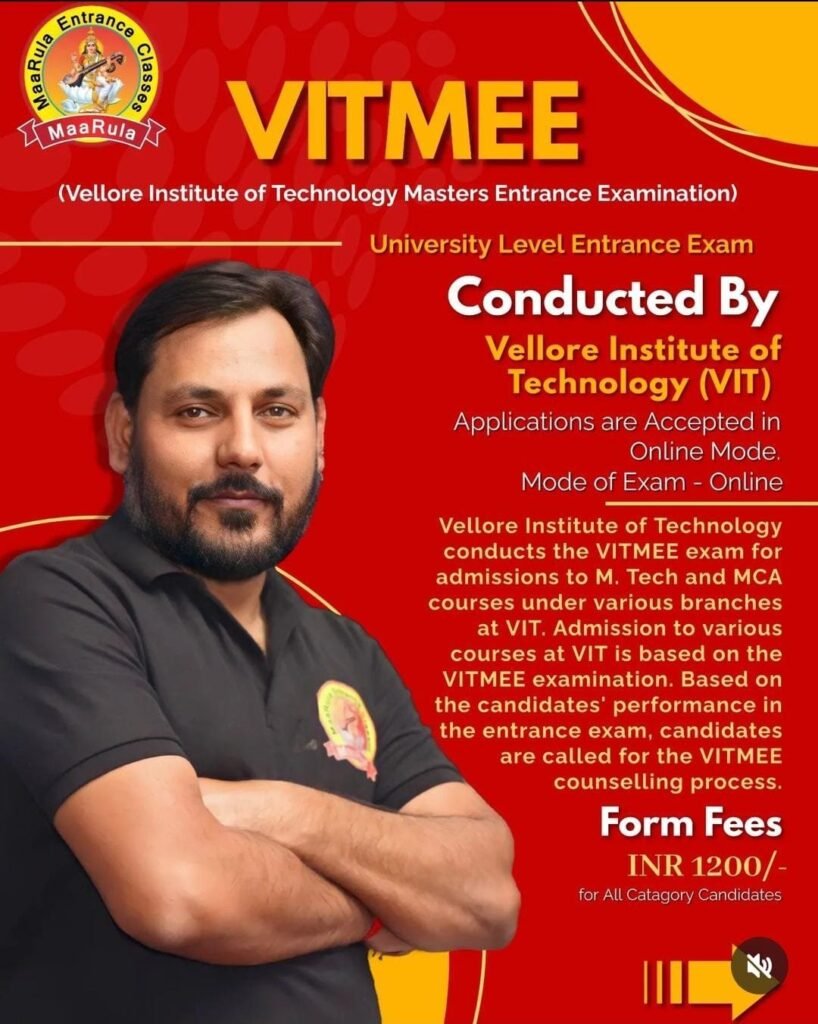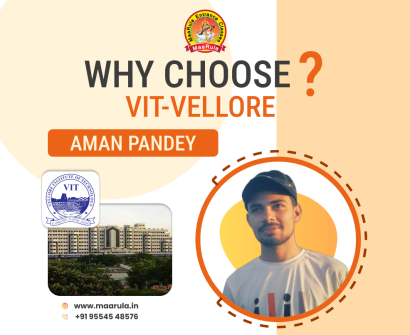Unlocking Opportunities: VITMEE 2024 MCA Entrance Exam Application Form Notification Released


MaaRula Classes is excited to bring you the latest update on the VITMEE 2024 MCA Entrance Exam! Aspiring MCA candidates, gear up as the application form notification for VITMEE 2024 has been officially released. This marks the beginning of your journey towards securing a spot in one of the prestigious MCA programs offered by Vellore Institute of Technology (VIT). Let’s delve into the key details you need to know to kickstart your application process.
Important Dates:
To ensure you don’t miss out on any crucial deadlines, here are the key dates you should mark in your calendar:
| Issue of Online Application | 22nd January 2024 (Mon) |
| Last date of Apply through online | 28th April 2024 (Sun) |
| Last date of Edit Application and Uploading of Documents | 28th April 2024 (Sun) |
| Date of VITMEE (CBT) | 5th May 2024 (Sun) Based on election date, there is possibility that the exam date might be subject to change only on the coinciding locations. |
| Declaration of Result [VITMEE] | 17th May 2024 (Fri) |
| Online Counselling Choice Preference Campus | 17th & 18th May 2024 (Fri & Sat) |
| Seat Allotment | 29th May 2024 (Wed) |
| Last Date to Pay Full Fee – MCA | 10th June 2024 (Mon) |
| Date of Orientation Programme (tentatively) | Second week of July 2024 |
VITMEE Application Process:
Create a candidate profile by providing your essential details. Make sure to use a valid email address and mobile number for communication purposes.
3. Fill in the Application Form:
Complete the application form with accurate personal, educational, and contact information. Verify the details before submission to avoid any discrepancies.
4. Upload Documents:
Scan and upload necessary documents such as photograph, signature, and relevant certificates as per the specifications mentioned in the guidelines.

5. Pay the Application Fee:
Pay the application fee using the available payment options. Keep a copy of the payment confirmation for future reference.
6. Submit the Application Form:
After completing all the steps, submit your application form. Take note of the application number or any reference ID generated for tracking purposes.
IMPORTANT LINKS
| Official Website | https://vit.ac.in/all-courses/pg |
| Register/Login | https://viteee.vit.ac.in/?utm_source=VJQY2341&utm_campaign=viteee2024 |
| Prospectus | https://vit.ac.in/files/VITEEE-2024-information-brochure.pdf |
Nationality/Eligibility Criteria
| Nationality | ¨ The applicant for admission should be a Resident Indian National and should have graduated from institutions located in India. ¨ Foreign and NRI/ PIO candidates must apply separately. For further details, please visit the International Relations tab in VIT website |
| Eligibility Criteria | · Recognized Bachelor’s Degree of Minimum three year duration in B.Sc (CS) / BCA / BSc (IT) with 60 % or 1st class in qualifying examina- tion with Mathematics as one of the subjects at graduate level / 10+2 level. · Other equivalent degrees, with 60 % or 1st class in qualifying examination, which has been approved and recognized by approval authorities of which Computer Science and Mathematics as major subjects during their programme of study. [Equivalence certificate from the University/Institute has to be submitted for double/triple major degrees] |
ADMISSION PROCEDURE
¨ The applicants should apply online in the respective link provided in the website (www.vit.ac.in) by paying a non-refundable application fee of Rs.1200/- (rupees of the thousand two hundred only, Including GST).
¨ Applicants should register for VITMEE, a Computer Based Objective test at indicated test centres.
¨ The list of short-listed candidates will be published in the website or personal SMS will be sent to the registered mobile number for onlinecounselling.
¨ Short-listed Candidates will be asked to choose the preference of campus. Selected candidateswill have to pay the full fees within of payment through online mode.
¨ Candidates who fail to pay the full fees within the deadline, will not be considered for admission.
FEE
| Particulars | Tuition Fee (Per Annum) | Caution Deposit (Refundable) | Total Fee |
| MCA (First Year) | ₹ 1,37,000 | ₹ 3000 | ₹ 1,40,000 |
| MCA (Second Year) | ₹ 1,37,000 | ₹ 1,37,000 |
ADMISSION PROCEDURE
¨ The applicants should apply online in the respective link provided in the website (www.vit.ac.in) by paying a non-refundable application fee of Rs.1200/- (rupees of the thousand two hundred only, Including GST).
¨ Applicants should register for VITMEE, a Computer Based Objective test at indicated test centres.
¨ The list of short-listed candidates will be published in the website or personal SMS will be sent to the registered mobile number for onlinecounselling.
¨ Short-listed Candidates will be asked to choose the preference of campus. Selected candidateswill have to pay the full fees within of payment through online mode.
¨ Candidates who fail to pay the full fees within the deadline, will not be considered for admission.
SYLLABUS
| MATHEMATICS | Algebra: Fundamental operations in Algebra, Expansion, factorization, quadratic equations, indices, logarithms, arithmetic, geometric and harmonic progressions, binomial theorem, permutations and combinations.Calculus: Functions of single variable, limit, continuity and differentiability, Mean value theorems, indeterminate forms and L’Hospital rule, Maxima and minima, Taylor’s series, Fundamental and mean value-theorems of integral calculus, total derivatives, Lagrange method of multipliers.Differential Equations: Differential equations of first order and their solutions, linear differential equations with constant coefficients, homogenous linear differential equations.Algorithms: Analysis, Asymptotic notation, Notions of space and time complexity, Worst and average case analysis; Design: Greedy approach, Dynamic programming, Divide-and conquer; Connected components, Spanning trees, Shortest paths. Asymptotic analysis (best, worst, average cases) of time and space, upper and lower bounds.Probability: Probability theory, Dependent and independent events, frequency distributions, and measures of dispersions, Skewness and Kurtosis, random variable and distribution functions, mathematical expecta- tions, Binomial, Poisson, normal distributions.Algebra and Complex Analysis: Algebra of matrices, rank and determinant of matrices, linear equa- tions. Eigenvalues and eigenvectors, Cayley-Hamilton theorem. Matrix representation of linear transformations. Canonical forms, diagonal forms, triangular forms, Quadratic forms, reduction and classification of quadratic forms Analytic functions, Cauchy-Riemann equations. Contour integral, Cauchy’s theorem, Cau- chy’s integral formula, Taylor series, Laurent series, calculus of residues. Conformal mappings, Mobius transformations—Fourier series—harmonics.Calculus and its Applications : Linear ordinary differential equations (ODEs), variation of parame- ters, Sturm-Liouville problem. Partial differential equations (PDEs) – Classification of second or- der PDEs, General solution of higher order PDEs with constant coefficients, Method of separation of variables for Laplace, Heat and Wave equations. Transformation techniques—Laplace transfor- mation— Fourier transforms—z—transformation to solve differential and difference equationsNumerical Methods: Numerical solutions of algebraic and transcendental equations iteration meth- ods and Newton—Raphson method, Solution of systems of linear algebraic equations using Gauss elimination and Gauss-Seidel methods-Numerical differentiation and integration, Numerical solutions of ODEs and PDEsDescriptive statistics, Exploratory Data Analysis: Sample space, discrete probability, independent events, Bayes theorem. Random variables and distribution functions (univariate and multivariate) – expectation and moments. Independent random variables, marginal and conditional distribu- tions. Characteristic functions. Standard discrete and continuous univariate distributions. Corre- lation and simple and multiple linear regression. Test of hypotheses—Large and small sample tests confidence intervals. Chi-square test goodness of fit. Simple non parametric tests for one and two sample problems, rank correlation and test for independence. ANOVA. |
| COMPUTER | Date Structures: Arrays, Stacks, Queues, linked Lists. Sorting techniques, Searching Techniques, Trees and Graph terminology and representation in memory, binary search tree, traversal techniques of graphs and Trees.Computer Networks: Network models, Internet model, OSI model, Physical Layer – Analog and Digital Signals, Analog and Digital Transmission, Coding, Sampling. Data Link Layer – Error detection and correction, Data link control and Protocols, Stop and wait, Go-back-n, Selective repeat. Network Layer – Inter-networks, Addressing, unicast and multicast routing, Presentation Layer.Programming in C: Data types, Declarations, Expressions, statements and symbolic constants, input-Output functions. Operators and expressions: Arithmetic, unary, logical, bit-wise, assignment and conditional operators. Control statements: While, do-while, for statements, nested loops, if else, switch, break, Continue, comma operators. Storage types: Automatic, external, register and static variables. Functions: Defining and accessing, passing arguments, Recursion.Operating Systems: Process management, Process States, Process Control Block, Process and Threads, CPU Scheduling, Scheduling algorithm, Process Synchronization and Deadlock, Memory management, Virtual memory concepts paging and segmentation File organization, Blocking and buffering, file descriptor, File and Directory structures, I/O DevicesComputer Architecture: Boolean algebra and computer arithmetic, flip-flops, design of combinational and sequential circuits, instruction formats, addressing modes, interfacing peripheral devices, types of memory and their organization, interrupts and exceptions. Von Neumann Computer, System Bus. Instruction Cycle, Data Representation, Machine instruction and Assembly Language. |
| ENGLISH | 1. Grammar Subject – Verb Agreement Tense forms Voices Articles and Preposition Use of Conjunctions 2. Writing Technical Instructions 3. Writing Memos & Writing Minutes 4. Transcoding 5. Preparing Questionnaire 6. Proof Reading 7. General vocabulary (words often confused) |
Preparation Tips:
Now that you’ve successfully submitted your application, it’s time to gear up for the VITMEE 2024 MCA Entrance Exam. Here are some preparation tips to help you excel:
1. Understand the Exam Pattern:
Familiarize yourself with the exam pattern, including the number of sections, marking scheme, and time allocation for each section.
2. Create a Study Schedule:
Develop a realistic and structured study schedule. Allocate sufficient time to cover all the topics and revise regularly.
3. Practice Previous Year Question Papers:
Practice with previous year’s question papers to get a sense of the exam’s difficulty level and the types of questions asked.
4. Take Mock Tests:
Simulate exam conditions by taking mock tests regularly. This will help improve your time management and boost your confidence.
5. Focus on Weak Areas:
Identify your weaker areas and allocate extra time to strengthen those topics. Seek guidance from teachers or mentors if needed.
Conclusion:
The release of the VITMEE 2024 MCA Entrance Exam application form notification opens the doors to countless opportunities for MCA aspirants. With meticulous preparation and dedication, you can navigate through the application process and ace the upcoming exam. MaaRula Classes wishes you the best of luck on your journey to securing a spot in VIT’s esteemed MCA program. Remember, every step you take now brings you closer to a bright and promising future. Good luck!



